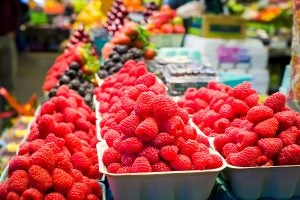The U.S. Department of Agriculture’s organic certification is more recognizable today than ever before, even if consumers aren’t always clear on what it actually means (hint: organic farmers can — and do — use pesticides). That’s not necessarily their fault considering the program’s complex regulations and the (often misleading) marketing that accompanies it. But organic imports take the confusion to the next level.
For example, did you know vegetables grown in another country can be sold in the U.S. with a USDA-certified-organic label? Or that trade agreements govern the importation rules and vary from country to country? In a series of articles, I’m peeling back the cover of these agreements and, hopefully, bringing some clarity. I’ve already examined the equivalency agreement between the U.S. and the European Union. And I surprised myself by learning that the USDA has organic certifiers who actually live and work in Mexico.
This time I’m staying in North America and analyzing the U.S.’ trade agreement with Canada. Growing up in a northern-border state, the U.S.’ relationship with Canada seems much different than its relationship with Mexico. The Canadian government seems more stable and reliable. And there’s a perception, right or wrong, that goods imported from Canada are more trustworthy.

So it makes sense that the U.S. has an equivalence agreement with Canada’s organic certification. Generally, products grown in compliance with Canada’s organic program can be imported to the states and sold with the USDA’s organic label. And products grown in compliance with the U.S.’ organic regulations can be shipped to Canada and sold with the country’s organic label. Eligible products include crops, wild crops, livestock, and processed products.
The exception to the rule highlights the differences between the two countries’ organic regulations. The USDA requires Canadian farmers to meet one additional hurdle to gain certification here. Animal products can’t be marketed as organic if the animal was ever given antibiotics. It’s a controversial policy here, and evidently doesn’t have an equivalent up north.
Canada’s organic certification actually has more requirements than the U.S.’ programs. So farmers hoping to sell their organic products in Canada have additional burdens. For example, agricultural products raised by hydroponic or aeroponic production methods can’t be certified organic. Products with sodium nitrate can’t be sold as organic. And animal products must meet livestock stocking rates required by Canadian law.
Both countries require imported products to include an organic certificate stating the product was raised in accordance with the respective country’s regulations.
And as the programs and regulations change, those differences are recognized by both countries. A technical working group keeps track of variances between the two organic programs and recommends any additional attestations needed for compliance. The countries also perform mutual peer reviews to ensure that the equivalency agreement is being followed in the marketplace.
The differences between the USDA’s approach to Mexico and Canada couldn’t be more stark, reinforcing the perceptions I discussed earlier. In Mexico, the USDA hires its own agents to certify organic products grown in Mexico. There really isn’t any collaboration between the two countries. But with Canada, there’s a higher level of trust. So, aside from some differences, products accepted for certification in one country are accepted in the other. And each country relies on its own employees to act as certifiers.
It’s an interesting dichotomy that probably says a lot about continental trade and relations.
Amanda Zaluckyj blogs under the name The Farmer’s Daughter USA. Her goal is to promote farmers and tackle the misinformation swirling around the U.S. food industry.



